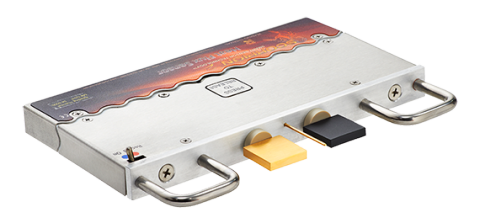If you are interested in baking temperature optimization, the innovative SCORPION® 2 Data Logger with Temperature Sensor Array from Reading Thermal measures, captures, and stores oven temperature profiles so that you can bake your products to perfection.
The heat transfer experts at Reading Thermal, headquartered in Sinking Spring, Pennsylvania, have been studying, measuring, and understanding the commercial baking process for over 25 years. We manufacture and support the SCORPION® 2 Profiling System which is a standard in the baking industry.
The Importance of Temperature Profiling
The quality of your finished products depends upon the performance of your oven. While you may know a lot about every other step in your manufacturing operation, do you know what is happening inside your oven?
The characteristics of baked goods are determined by the amount and type of heat applied to them during the baking process, and every oven bakes differently. Temperature profiling provides you with reliable data that will help you optimize your process, prove process control, and make corrections when required.
The benefits include:
- Better control of product quality
- Better control of product consistency
- Increased productivity
- Reduction of energy consumption and costs
- Improves process repeatability
- Quick troubleshooting
How to Measure Oven Temperature
The Reading Thermal SCORPION® 2 Temperature Sensor Array is designed to measure temperature at product level, in fixed positions across the conveyor, and delivers a true representation of what your product is experiencing over time. Different types of pluggable sensors are available, including one designed for solid or tight mesh conveyors and one for open mesh conveyors.
The sensor array is connected to the SCORPION® 2 Data Logger and travels through the oven with your product(s), yielding a precise picture of temperature from side-to-side and end-to-end.
After gathering the data, the SCORPION® Software (SV8) Food Safety Module simplifies the lethality calculation and then generates a comprehensive report displaying cumulative log reduction. By combining this ease of measurement with robust data capture, the SCORPION® 2 System makes it simple to optimize your process and products while meeting food safety standards.
Measuring Other Baking Parameters
Air velocity: Measuring oven air velocity is critical because it influences the texture, coloration, firmness, and baking time of the final product. Oven air velocity can be measured and recorded with the SCORPION® 2 Air Velocity Sensor which paints a precise picture of airflow patterns inside the oven from side to side and end to end.
Heat flux: Oven heat flux is the very best indicator of oven performance during baking. Many bakers use oven heat flux profiles when trying to produce the same product on two different lines. The two lines will produce the same product when the heat flux profiles match. The SCORPION® 2 Heat Flux Sensor measures convective and radiant heat fluxes at product level and displays the results in Btu/hr·ft2 or W/m2.
Humidity: Humidity in the oven often comes from the product itself and affects finished product quality in many ways; e.g., the amount of moisture left in a pretzel can affect its shelf life, while less evaporation can keep the surface of a cookie moist, allowing it to stretch, preventing cracks. The SCORPION® 2 Humidity Sensor is designed to measure the absolute moisture content of the thermal environment in both your heating and cooling processes.
Get in touch with Reading Thermal to learn more about the important factors involved in baking temperature optimization, such as SCORPION® 2. Contact us online or call us at (610) 678-5890 Ext. 2.

